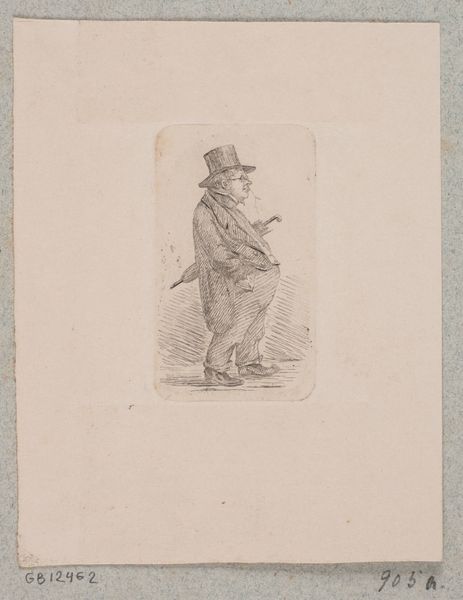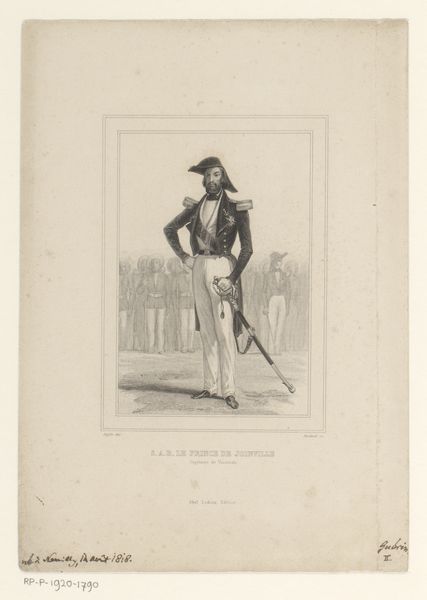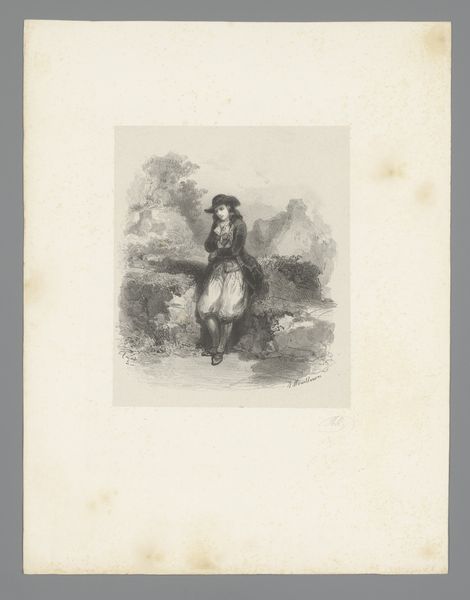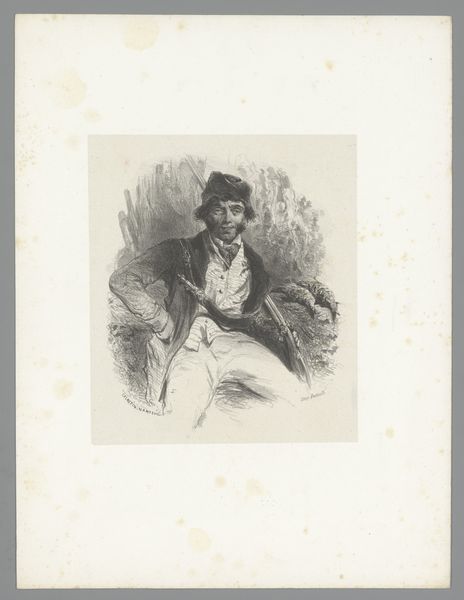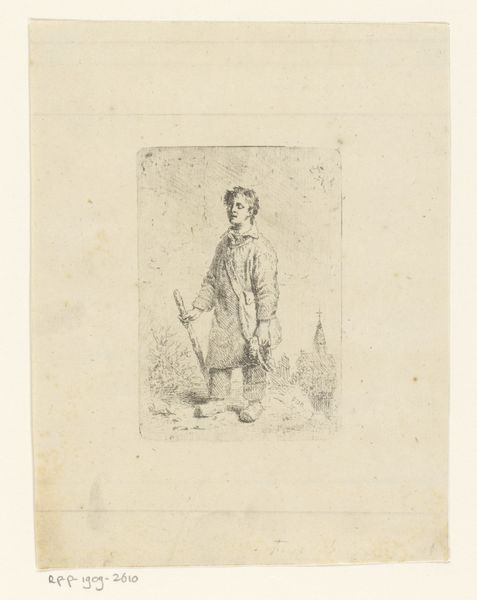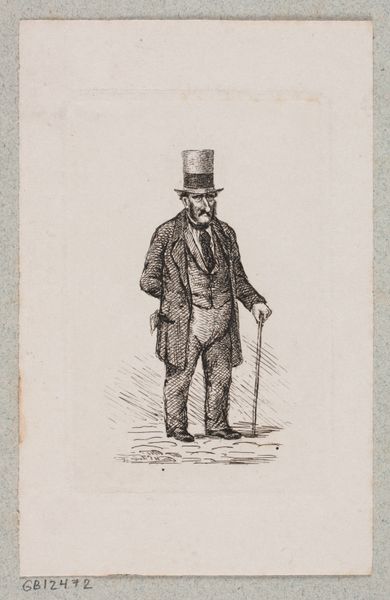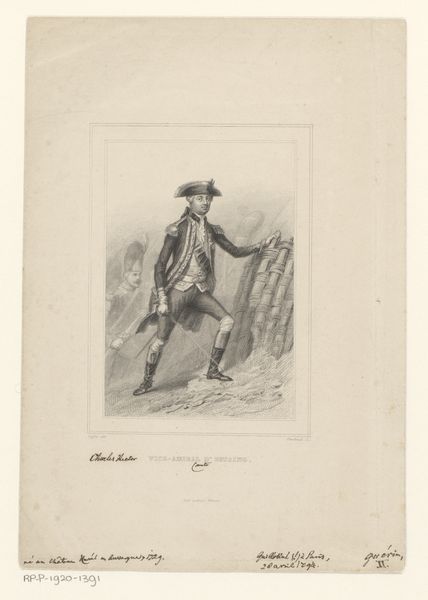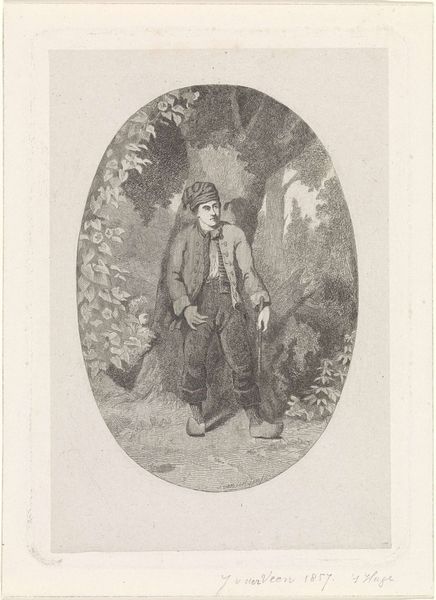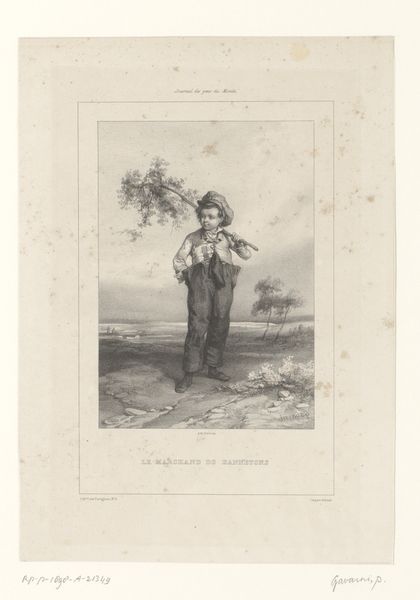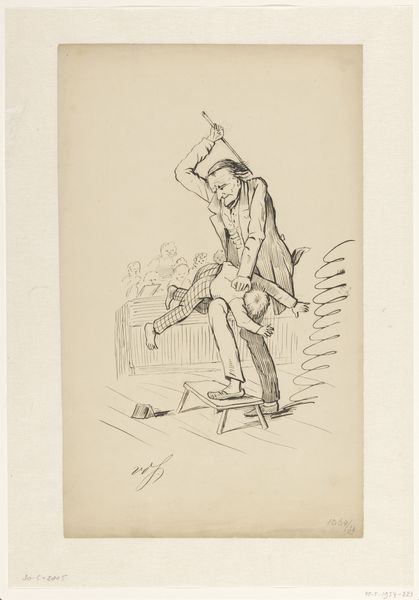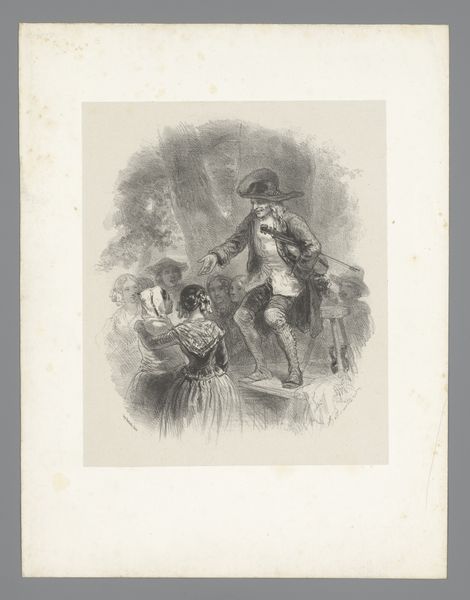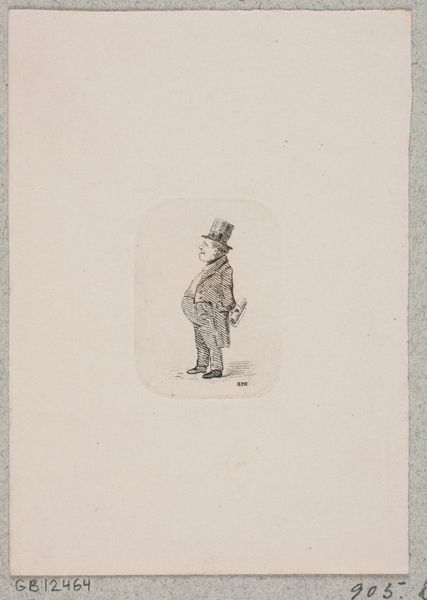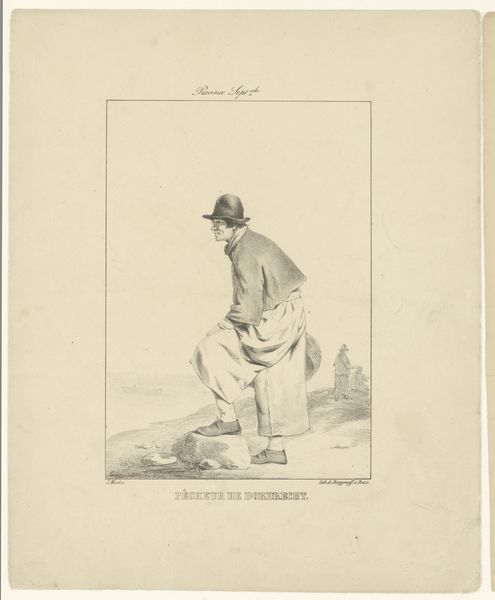
drawing, lithograph, paper, ink
#
portrait
#
drawing
#
lithograph
#
figuration
#
paper
#
ink
#
romanticism
#
genre-painting
Dimensions: height 162 mm, width 242 mm
Copyright: Rijks Museum: Open Domain
Curator: Here we have Paul Gavarni's lithograph, "Romeins kind wordt naar school gebracht," dating from 1835. The piece, crafted with ink on paper, is currently housed here at the Rijksmuseum. Editor: Well, my first impression is… melancholic? The way the light seems to catch the boy's silhouette while he’s idling, seemingly reluctant to go anywhere. Curator: It’s an interesting tension. The precise linework detailing the boy’s tailored clothes versus the looser rendering of the background foliage. Editor: It hints at the societal constraints versus the lure of the natural world, perhaps? How does this fit into Gavarni's other work and the Romantic period? Curator: Gavarni often focused on satirical portrayals of Parisian life. But in that frame, this isn’t strictly satire, yet the dandyish attire, in sharp contrast with what should be an innocent figure is notable. It becomes about social performance from a very young age. Editor: Right, the politics of imagery kicking in even in youth. This is more about a class performance, perhaps, as the boy's attire denotes privilege rather than innocence. The title "Romeins kind wordt naar school gebracht," it sounds like a description, or… almost a commentary? Curator: It distances and idealizes, casting a contemporary scene into a more classical, historical light. That relates to Romanticism's broader concerns with history and the past, especially how social structures of the past bear on present identities. Gavarni subtly deploys the era’s formal language, particularly compositionally. Editor: And it does speak to how anxieties surrounding class, education, and societal expectations would be relevant cultural issues in Paris during that era. In the way it connects these cultural considerations, perhaps it is satirical in essence, but with a subtle and deft rendering. Curator: Indeed. This work reveals how Gavarni, even in a seemingly simple portrait, engages with deep historical currents and social critique. A compelling testament to his artistic awareness. Editor: The play of light and shadow also reinforces that feeling, hinting at something deeper bubbling beneath the surface that speaks beyond time periods. Curator: A nuanced interplay indeed. The structural balance highlights a wealth of layered commentary that gives us insights still relevant today.
Comments
No comments
Be the first to comment and join the conversation on the ultimate creative platform.
